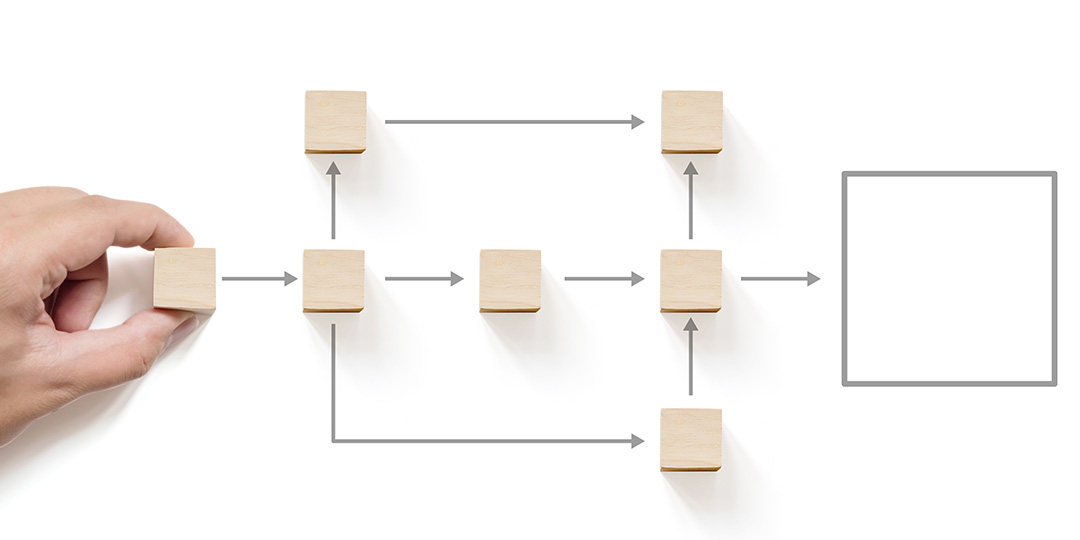Process & Workflow
Workflow Analysis: What is it and How Does it Help?

Does your business or organization have a process for analyzing workflows?
We didn’t think so.
The truth is having a solid workflow analysis process can help improve efficiency in daily or periodic operations.
While this is a common exercise for most company structures, it’s important to understand its purpose, understand how it can add value to your internal processes, and find the factors that will keep the system afloat.
What is a Workflow Analysis?

Every business or organization has workflows. Although workflows might look different for each business, they are necessary for achieving operational, organizational, or project goals.
workflows, , whether or not they realvery team in an organization abides by a designed workflow to successfully reach a project’s goals.
A workflow analysis is the process of breaking down existing workflows in order to determine which individual processes need to be enhanced or improved for a more productive and efficient working environment.
A solid and efficient workflow analysis can help provide a clearer view of the following:
- Bottlenecks or roadblocks
- Redundant or duplicate work efforts
- Inefficiencies
- Overlooked opportunities
Even though many businesses today are adopting automated workflows, they still aren’t realizing all the benefits. This is because the core foundations, including the purpose of the project, expected outcomes, and consequences are not always well considered.
A workflow analysis can address these things and more. Collecting feedback from stakeholders and hard performance data can help team members find a solid solution to fix issues.
To sum up, a workflow analysis can help:
- Automate a strong workflow
- Realize benefits from workflows
- Improve weak workflows
- Document workflows
Why Should You Perform Workflow Analysis?

An economy is composed of both the market and the ever-changing environment. It naturally evolves and fluctuates over time. By regularly performing workflow analyses, companies have a better chance of remaining competitive, innovative, and keeping up with market trends.
Workflow automation puts many repetitive tasks on autopilot, saving you and your team crucial time and energy. By conducting a workflow analysis, you can ensure that your methods and techniques are enabling you to reach your goals.
How Does a Workflow Analysis Help Your Business?
A workflow can be costly when manual or redundant tasks are not effectively sorted out in automation. One example that might be common to most teams is the tendency of making a report or finishing tasks that no one actually reads. It could take hours to complete a task, depending on the scope of work and coverage. But there may be other methods to produce reports in which it can much better serve its purpose and at the same time, save costs and energy.
Such an instance can be identified during the workflow analysis. It may just be an atom of a task, but it can have a macro impact as one tiny issue in the process can affect other tasks as well. The essence of having a workflow analysis process in the business is to achieve faster outcomes and improve the performance of each stakeholder.
Efficient workflows can help pave the way to success in nearly every area of business, such as sales, marketing, finance, and development. Workflow analysis plays a critical role in improving the internal system. It can help businesses stay ahead of employee engagement, regulatory compliance, customer satisfaction, and productivity. Aside from improving the efficiency of the workplace, conducting a workflow analysis reduces the costs of accomplishing each individual task or activity.
Developments don’t happen overnight, but small wins always count. The little milestones in the process can save a company valuable time and resources. Implementing new workflows aren’t always easy, but a business will see the benefits over time.
Steps of Workflow Analysis

Performing a valuable and successful workflow analysis begins by following the right steps and asking the right questions:
- What do we do? Lay down the core tasks of the team. Task sequencing varies from one sector to another. Identifying them according to the nature of your business will help you scheme for more specific solutions.
- How do we do it? Follow existing workflows and processes and examine how tasks should be done. Paying attention to the details of this phase can uncover many unknowns, inefficiencies, and even errorsr. This step can be enlightening and have a massive impact on overall efficiency.
- Why do we do it? This phase highlights the reasons for the need for a workflow analysis in the first place.
- What does each team or department do? Many business workflows and processes are cross-functional, meaning they involve other departments and teams. This means you need to have a clearer view of how the product or project travels through the process and in between departments.
Answers to these questions will serve as your guide to enhancing your existing workflows and even building new ones.
Now, let’s move onto the steps you need to take to conduct your workflow analysis:
Step 1: Evaluate Your Workflow
Understand and document the scope of your workflow. Let’s use the task of producing a marketing video as an example. Work with or shadow a video producer or content creator to see and understand the process for how a video is created.
Then, ask the following questions:
- What’s the result of the workflow?
- What is the subprocess of the workflow?
- Do problems occur? If so, what are they?
- Which subprocess is causing problems?
Step 2: Collect Data
Conducting a workflow analysis involves collecting both quantitative and qualitative data.
Quantitative data involves collecting numerical data related to a process or workflow. The best way to gather quantitative data is by keeping in mind how large the workflow you are planning to improve or optimize is.
Qualitative data consists of the factors that contribute to your in-depth understanding of the workflow. With such data, you’ll be able to dig deeper into the problem and come up with better solutions. This reveals the root of the problem and validates your quantitative data.
Step 3: Analyze the Data and Ask Questions
Once you have collected all the necessary information, it’s time to analyze your current findings and begin to ask some critical questions. Combine both qualitative and quantitative data sources. As you go through the merged data, look into the subprocesses that are affiliated with the issues and problems. Then, ask yourself the following questions:
- What is working?
- What isn’t?
- Have we made any progress toward our goals?
- What and where can we make improvements?
If your processes and workflows aren’t working, then zero in on what improvements you can make and how you can optimize.
Step 4: Identify Possible Improvements and Implement Workflow Changes
Once you identify where your workflows could be improved and how, the next step is to begin mapping out some solutions. Gather your team and schedule a brainstorming session. You may jot down all possible solutions in a spreadsheet and rate them one by one. Companies use software to improve their workflow and you can apply the same strategy for your new implementations.
Performing a Workflow Analysis in Less Time
The day-to-day “whirlwind” of business operations can redirect team members’ focus on simply keeping up with daily responsibilities rather than goals. This is often where performing a workflow analysis falls by the wayside. Of course, it can take time and effort to do an analysis, but it is necessary to ensure your business is running like a well-oiled machine.
Rindle can help you build, monitor, and track your workflows, all in a single interface. It is also designed with key features and functionality, such as automations to further improve and optimize your workflows. If you and your team have been struggling with the “how” of building workflows and regularly performing workflow analyses, then Rindle is the answer.